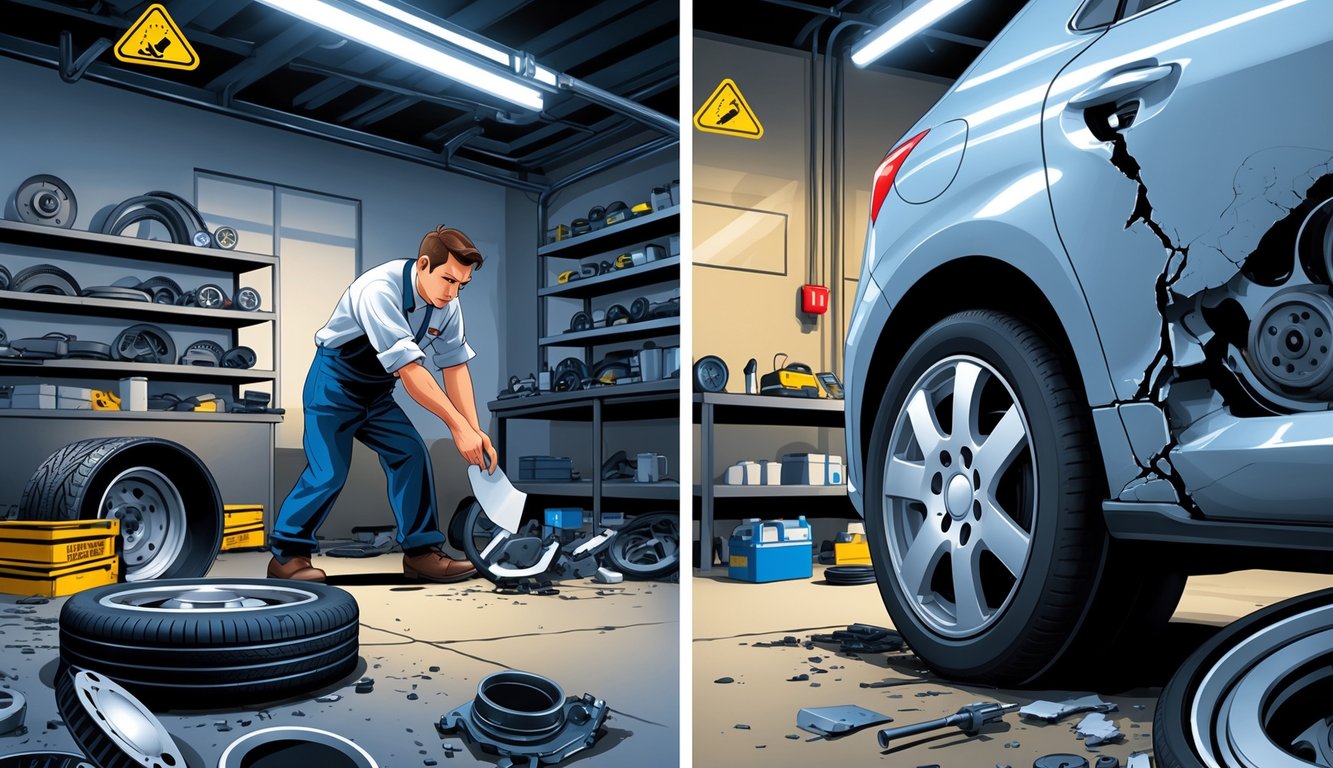
Steps For Better Safety And Reliability
Nobody ever seems shocked when someone brags about saving $20 on a no-name brake pad—until it’s screaming three months later or eats the rotor. There’s just no shortcut: cheap parts = more risk, and risk multiplies in the dumbest ways.
Prioritizing Quality Over Cost
Let’s not kid ourselves: the whole “save money on parts” thing is just a safety nightmare waiting to happen. I’ve lost count of how many people bring in “compatible” parts in boxes that look like they’ve been through a flood. OEM parts cost more, but at least you know they’re made for your car—if you care about reliability at all.
I read a service bulletin—something like 42% of generic parts fail durability tests. That’s not even counting the ones that technically “work” for a week and then fall apart. Swapping in non-OEM engine parts isn’t just about breakdowns; you’re risking brakes and airbags. Want your car to actually work? Stick to traceable brands and check those aftermarket certifications. I do, anyway.
Advocating For Stronger Regulations
It’s not all on us—regulations for spare parts are basically full of holes. Some suppliers operate in this weird gray area where nobody’s watching, and I’ve seen parts with no paperwork end up on critical systems. Completely avoidable, but here we are. Tighter rules in the supply chain would help stop the worst of it.
Got into an argument (should’ve just kept my mouth shut) about how spotty audits and weak import checks let junk parts get installed on people’s cars. International standards exist, but nobody enforces them. Even basic things like tracking repairs using standardized KPIs, like in this reliability improvement roadmap, could push shops to actually care. Or maybe not—some people just want to cut corners and hope for the best.
Frequently Asked Questions
Every week I see some horror story about body shops sneaking in cheap parts that the manufacturer’s never even heard of—like ordering a veggie burger and getting ground beef. Windshields, too. Shops always use the cheapest thing, figuring nobody will notice unless it falls off or shatters.
What are the riskiest low-cost replacement parts that some repair shops might use?
It’s always the stuff you’d think they’d never mess with: windshields, airbags (yep, some shops do it), or bumpers that are supposed to save your life but cost less if they’re uncertified. Used windshields from salvage yards are dirt cheap, but nobody tells you if it’s full of micro-cracks from the last hailstorm.
Insurers sometimes push for cheap panels after a crash, “to save you money,” but really, it just puts you at risk if you get hit again. It happens more than you think—something like 36 states have sued insurers over aftermarket replacements. Total gamble.
How can I tell if a part a garage used is potentially unsafe?
There’s no giant sticker saying “danger” under the hood. If I see an off-brand label where there used to be a shiny OEM stamp, I get suspicious. Sometimes I’ll call the dealer for specs, only to get stuck on hold forever.
Counterfeit parts usually come in weird boxes, with numbers that don’t match, or—my favorite—a paint job that chips if you so much as touch it. One time my mechanic handed me a headlight so light I thought it was a toy.
Are there specific signs that indicate a replacement part is substandard?
Weird noises right after leaving the shop? Happened to me with brakes after a “deal.” Paint that flakes off, panels that don’t line up—just looks wrong. Even a terrible paint job can’t cover up bad structure.
Mechanics grumble about fitment issues—bolts that won’t tighten, extra washers left over, like building IKEA furniture. I heard a tech say some aftermarket parts warp after a month in the sun, and Forbes actually investigated it.
What should I watch out for when a shop allows me to bring my own spare parts?
Shops act grateful when you bring your own parts, but if you got it off eBay or a junkyard, who’s checking for hidden cracks or if the airbag’s already gone off? Learned the hard way with a used mirror that didn’t work—had to go back.
Mechanics often dodge warranty responsibility if your part fails, and they might not even warn you if your “special deal” brake pads are junk. If you bring it, you’re the only one checking—nobody reads the fine print until something goes wrong.
How do repair programs ensure the safety of the parts used in my vehicle?
Supposedly, direct repair programs have all these processes—paperwork, photos, barcodes—to make sure parts are legit. But honestly, with the number of claims, stuff slips through. I’ve seen a recycled fender get “inspected” just because the tech was slammed.
They’ll say “OEM or equivalent,” but what’s “equivalent” anyway? OEM from a decade ago isn’t always the same as new. Sometimes techs only flag the obvious fakes, and the sneakier junk just gets installed. That’s the reality.
Can I trust all direct repair program shops to use parts that won’t compromise my safety?
Trust? Eh, that feels optimistic. I remember this one insurance adjuster straight-up bragging about “cost savings”—didn’t even pretend to care about safety or, I don’t know, actual crash tests. There’s this 2023 report floating around (and yeah, I read it, because apparently I have nothing better to do) saying some shops basically got called out for jamming in sketchy aftermarket parts—here’s the link if you’re into legal horror stories.
Honestly, I end up doomscrolling reviews for hours and still wind up asking for every single parts invoice. Half the time the paperwork just says “CAPA-certified” or “aftermarket equivalent” and then… that’s it. No brand, no details, just vibes. Maybe it’s fine, maybe it’s not—how are you supposed to know? Usually you only find out after something actually breaks, which is a great system, right?
